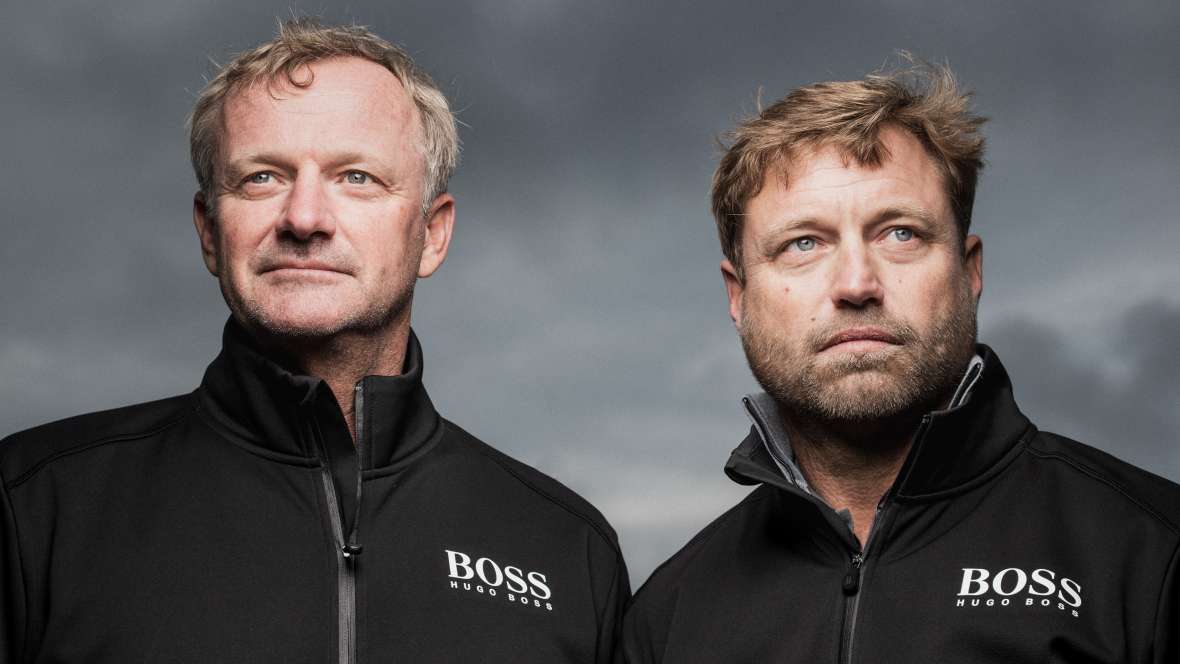The latest race news from the race

© Jean-Louis Carli/Alea
Skipper's log: Alex Thomson and Neal McDonald (Britain), Hugo Boss (IMOCA)
In a video sent from Hugo Boss last night (Monday), Alex Thomson and Neal McDonald explain the decision to cut the keel from their 60ft monohull, the implications and what happens next.
Alex: Hi everybody, well, it’s Neal and I on HUGO BOSS. Not been the best 36 hours for us. Yesterday, at about, just after 9 o’clock, we hit something very hard in the water and when I say very hard, we were doing about 25 knots at the time and we came to a complete standstill. It was a pretty terrifying experience. Neal was just the other side down here around the corner here, and I was standing right about where I am standing now in front of the pedestal. At that kind of speed and coming to a standstill, it’s like being in a car crash or hitting a brick wall at 30 miles an hour. I ended up down there on the floor underneath the winch table in quite some pain and Neal ended up squashing the bulkhead. Very, very unpleasant and really quite scary. Both of us were in a bit of shock afterwards. Very quickly afterwards I had a quick look down there in the keel hole and I said to Neal ‘there’s daylight down there’, which was also pretty terrifying wasn’t it?
Neal: Not a thing I was expecting to hear and certainly quite shocked…yes, no good.
Alex: And the obvious thing for that was, because there wasn’t a keel at that point, we had broached and the boat when it hit whatever we hit turned very hard to port and the boat laid over on its side. And, of course, with no keel we capsized. So fortunately, the keel was still attached but it was only attached by the hydraulic rams. So, first job was really to get boat upright again, so we did that. Then the keel was hanging on the hydraulic arms outside the bottom of the boat, so we went straight back to our team to try and figure out what to do and the best thinking really was to try and stabilise it at that point so we tried to get some lines up from the bottom of the mast and various other bits of lines and tried to get our hands down there to try and get stuff around the keel head - really quite uncomfortable. But by yesterday evening it was very clear that we weren’t going to be able to stabilise it. So, we got our heads down and got some sleep and this morning we cut the keel away so that involved a grinder, some cutting disks obviously some safety glasses (Neal you are wearing the safety glasses now!)
Neal: Yes (laughs)
Alex: Very uncomfortable, it took hours and hours and hours but finally we got three quarters of it done and then, all of sudden while we were having a break, there was a little pop and the keel popped out down to the bottom of the ocean.
Now the obvious problem now is that we are not very stable so we lean over to about 30 degrees in the current condition then and [if] we didn’t let the sails out, the boat will capsize. So, it’s a bit nerve-racking now, but really, we didn’t have an option; the keel was just moving round destroying the boat and, well, we could end up with a lot of water in the boat. We do have quite a lot of water in the boat already but it’s manageable right now and we’ve decided the safest option is to sail to the Cape Verde Islands so we are heading south there. We are going to have some wind. We’ve only got about 10 or 11 knots at the moment, so we will be slowing down. I’m sure there will be times on the way there when we will just be under bare poles to try and stop the boat leaning over and going too fast and hopefully never reaching 30 degrees.
Obviously very gutting. You know we were going well at the time, going 25 knots and although we weren’t doing brilliantly in the fleet, you know for us it was a great learning experience. We felt we sailed the boat pretty well; the boat was great. It’s an awesome piece of kit and this is a real set back, but we are not complaining. We are going on, get to Cape Verdes, get the boat back and ship shape, get her home, get her fixed and try and get back out on the water as quickly as we can.
That’s it for now. More later.


